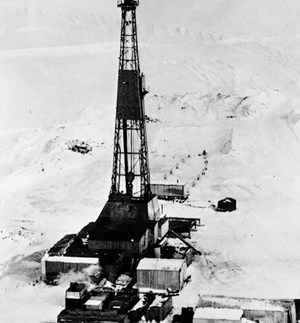Prudhoe bay: Discovery of Alaska’s oil giant
Richfield Oil Corp. began running seismic survey crews on the northern coast of Alaska, bordering the Arctic Ocean, in 1963. The Prudhoe structure was discovered the following year.
Prior to the field’s discovery, major oil companies already had established various exploration and drilling activities in the region. Wildcats were being drilled throughout Alaska, despite the harsh conditions. Exploration in Alaska proved to be much more expensive and time-consuming than that of other U.S. land operations, due to the unforgiving terrain, weather and logistical problems.
According to a feature article published in the December 1957 issue of World Oil, operators also were encountering serious problems providing market outlets for crude. Richfield’s Swanson River Unit 1 discovery well on Alaska’s Kenai Peninsula had spurred interest in the region, however, resulting in a substantial increase in exploration and drilling in Alaska at that time.
Prudhoe Bay field was discovered on March 12, 1968, by Humble (Exxon) and Atlantic Richfield Company (ARCO), with Prudhoe Bay State No. 1. During this time, BP also became a major player in the western part of the field. The field began operation as two separate developments, the BP Western Operating Area and the ARCO Eastern Operating Area. Later, BP acquired ARCO. The two operating areas were consolidated with BP as the sole operator of the field. In 1974, the State of Alaska estimated the field’s reserves at 10 Bbbl of oil and 26 Tcf of natural gas. Production from Prudhoe did not begin until June 20, 1977, when the Trans-Alaska Pipeline System was completed.
With a size of approximately 15 mi by 40 mi, Prudhoe Bay was considered North America’s largest oil field until recently. In 2015, it was demoted to the third-largest, when two Texas fields (Eagleville and Spraberry), at the forefront of the rise in shale, took the top spots. ![]()



